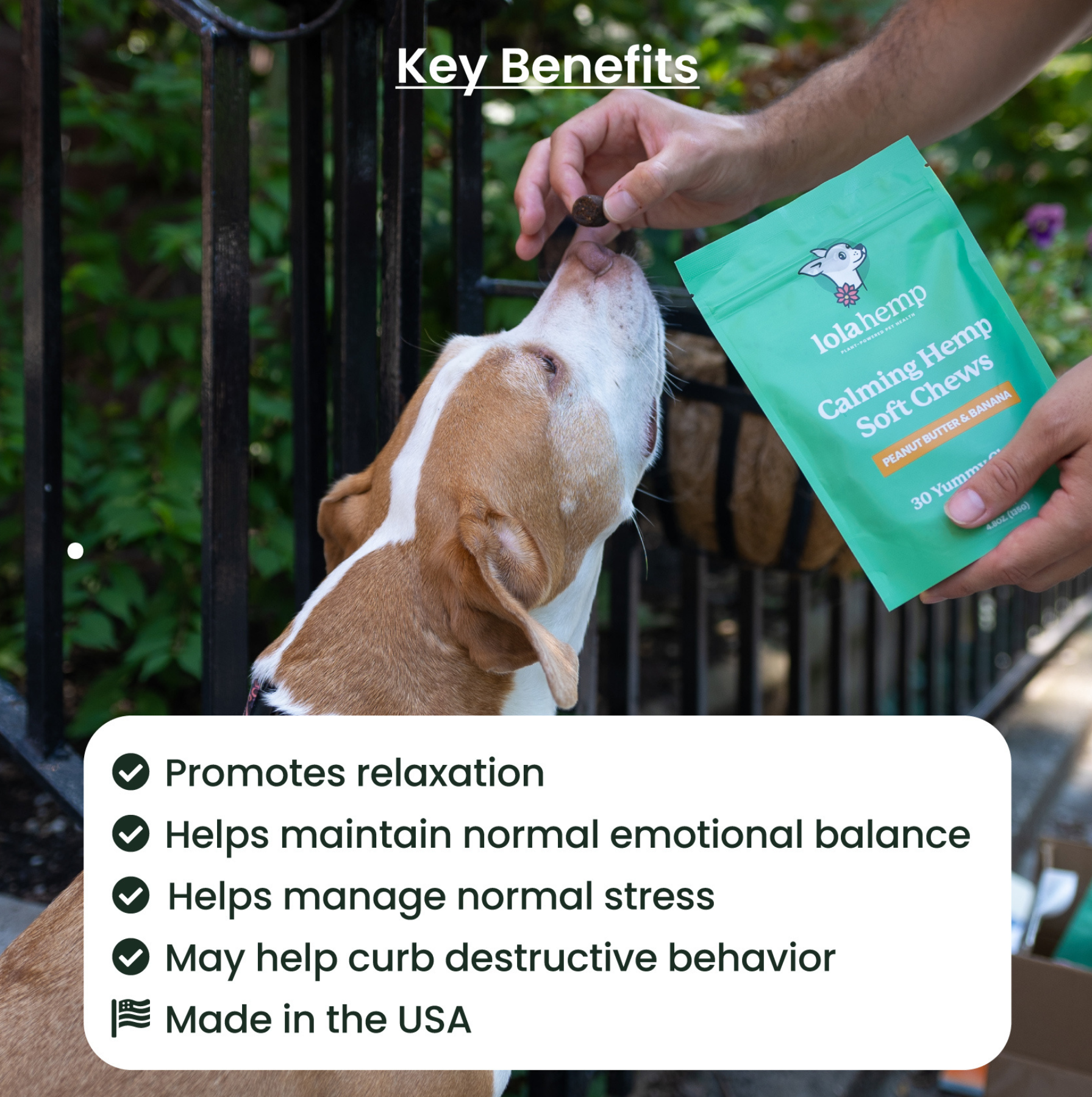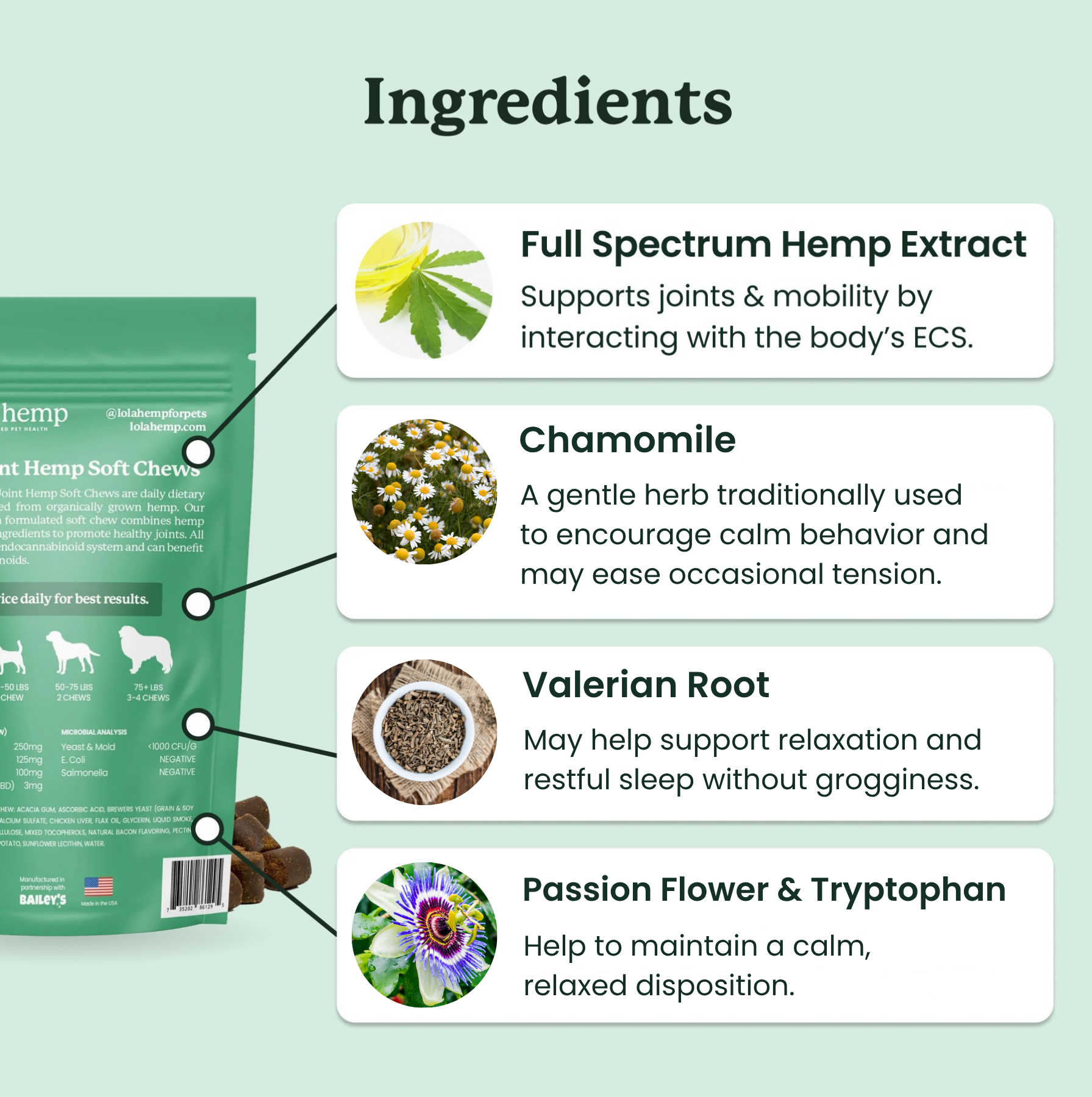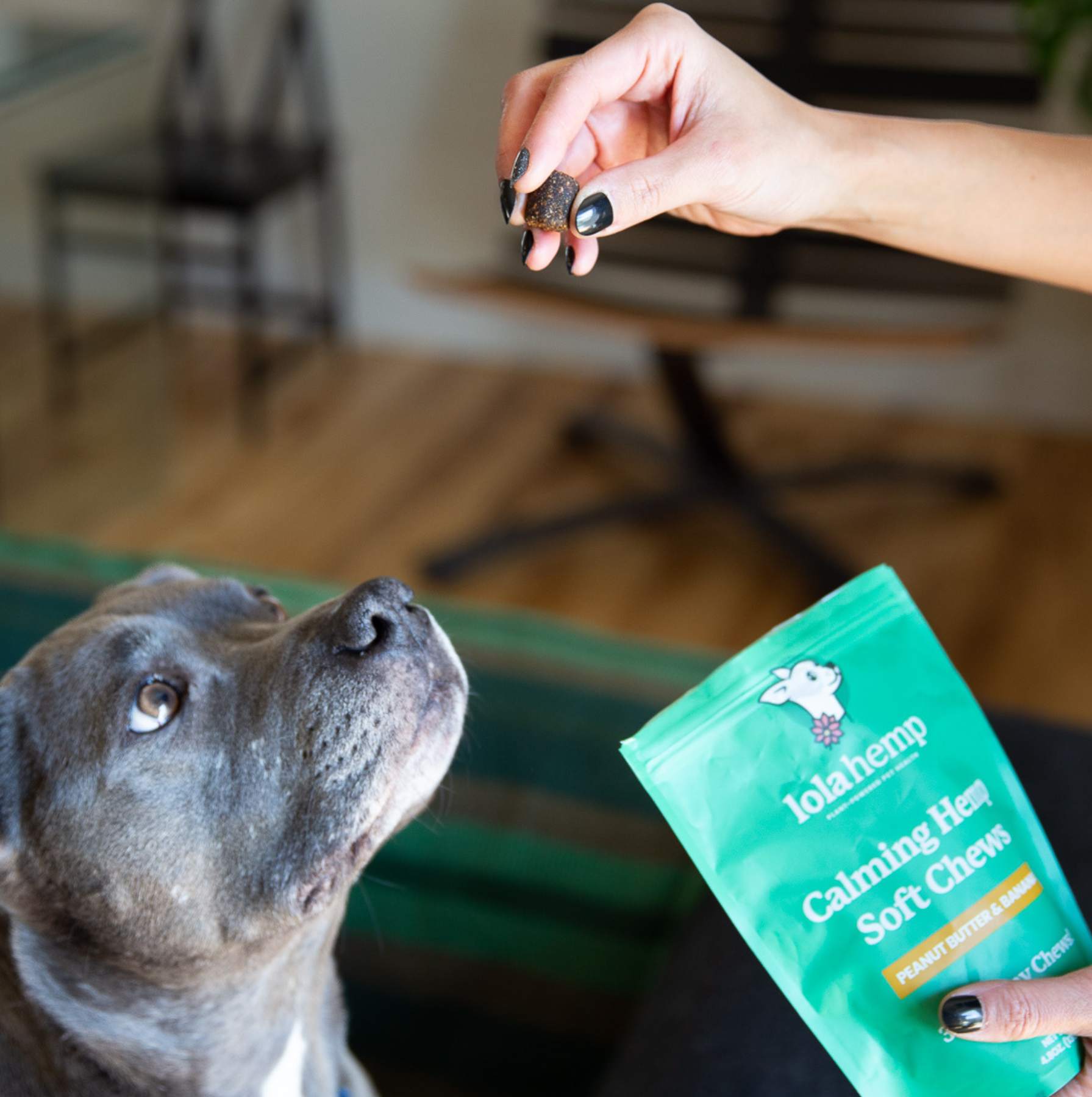Do you ever find yourself asking, "Is my dog stressed?" Reading the body language of a stressed dog can be challenging. Still, doing so is a crucial part of understanding your dog's needs and protecting their well-being.
This guide will explore the critical signs of stress in dogs, help you interpret dog stress signals, and provide strategies to help alleviate your dog's stress.
Serious and Critical Signs of Stress in Dogs
When your dog cannot escape the stressful situation, signs of stress can become more pronounced and potentially dangerous.

Signs of severe stress in dogs can include:
- Aggression toward people or other animals
- Fleeing (jumping the fence, slipping out of collar, etc.)
- Vomiting and diarrhea
- Self-injurious behavior (licking/biting front legs until sores appear)
- Destructive behavior (wrecking furniture when home alone, etc.)
Failure to recognize mild stress signals in dogs, like lip licking and avoidance, can lead to dangerous consequences. Dog fights, bite injuries, and fleeing into a busy road can all occur when a dog is stressed beyond their limit.
Aggressive behaviors in dogs are usually a "last resort," and dogs rarely become aggressive without warning. However, mild signs of stress can be subtle and easy to miss. Learning these early warning signs can prevent dog stress from escalating to aggression.
What Is Stress Colitis In Dogs?
Colitis generally refers to inflammation of the colon, which sits at the end of your dog's digestive tract. Stress-induced colitis is a bout of acute diarrhea seen in dogs experiencing high stress and anxiety levels.
In the moment, dogs experiencing stress colitis may have a loss of appetite or be unwilling to drink water. Dogs with frequent stress colitis episodes may lose weight, but this symptom is more common in other types of colitis.
If you suspect your dog may be suffering from stress colitis, consult your veterinarian to discuss management strategies. After an episode, a bland meal like boiled chicken and rice can encourage your dog to eat without upsetting their stomach further.
How to Help a Stressed Dog
Helping a stressed dog begins with identifying the source of stress. Monitor your dog's behavior for signs of mild stress and anxiety, and take note of the location, presence of other dogs, noise levels, and other potential triggers.
If you're unsure what's stressing your dog, visiting a veterinary behaviorist can help. You can also take a video of your dog when you think they may be stressed, allowing the veterinarian to observe behavior in their natural environment.
Once you identify your dog's stress triggers, it's time to fine-tune their routine and environment to promote calm. Changes you can make at home to reduce your dog's stress may include:

- Altering walk or feeding schedules
- Sticking to a predictable routine
- Providing calming medication during thunderstorms or car rides
- Increasing exercise
- Distraction with toys or healthy treats
- Switching dog parks
- Politely saying "no" when strangers ask to pet your dog
- Consulting a professional veterinary behaviorist
Remember, your dog's stress behaviors are a natural reaction to circumstances. They're simply communicating in the only way they know how. Stress behaviors are not a result of poor obedience training. However, positive reinforcement obedience classes may help you and your dog communicate more clearly and feel more secure.
What Causes Stress for Dogs?
Stress is defined as a general feeling of pressure, strain, or discomfort. Like humans, dogs can become stressed for a variety of reasons. Common stress triggers for dogs include:
- Separation anxiety/being home alone
- Car travel
- Loud noises (fireworks, thunderstorms)
- Changes in routine
- Changes in the environment (moving house, new pets or people)
- Veterinary office visits
This list is not exhaustive. Your dog's stressors will depend on their unique temperament and life history. Understanding what upsets your dog can help you provide extra support during difficult situations.
Mild Signs of Stress in Dogs
Importantly, there is no medical definition that separates mild and serious stress responses in dogs. Just like in humans, stress responses are a normal part of your dog's behavior. However, persistent or severe symptoms can suggest an underlying health condition.
Your dog communicates their stress in many ways. Mild to moderate signs of stress in dogs can include:
- Excessive panting
- Yawning
- Pacing
- "Shaking it off," similar to shaking out wet fur
- Whining or barking
- Lip licking
- Drooling
- "Whale eye" (white of the eye is visible)
- Body posture changes (tail low or tucked, flattened ears, head turned away, crouching)
- Excessive shedding or "blowing their coat"
- Ignoring or distracting themselves from a stressful person, dog, or situation
Attention to your dog's stress signals is essential; early recognition can help prevent stress from escalating to aggression.
Remember, symptoms of stress can overlap with other health issues. For example, excessive panting can be a sign of overheating. Keep environmental factors like temperature in mind, along with your dog's unique stressors.
Visit your veterinarian to help determine the cause of your dog's behaviors.
Using Counter-Conditioning to Relieve Stress in Dogs
Counter-conditioning is a training technique used to change a dog's emotional response to a stressful situation. This method involves gradually associating the stress trigger with something positive, like a treat or a favorite toy, to help reduce the dog's anxiety over time.
This approach can be effective but takes time and patience to develop. Reactive dogs are trying to protect themselves out of fear, and it’s hard to concentrate when anxious or frightened.
Start small so your dog can focus on the new reward, and gradually increase the challenge level. Consultation with a professional trainer or behaviorist is recommended when implementing counter-conditioning techniques.
Conclusion
Understanding critical signs of stress in your dog can significantly improve your pup's well-being. It's hard work to learn your dog's unique stress triggers, recognize stress behaviors, and change your routine. However, these steps can help your dog navigate stressful situations and improve their overall quality of life.
Dog Stress Signs & Stress in Dogs: Frequently Asked Questions
What are the signs of stress in dogs?
Signs include panting, pacing, trembling, tucked tail, whale eye, and avoidance behaviors.
Can stress cause diarrhea in dogs?
Yes. Stress colitis can cause acute diarrhea during periods of high anxiety.
How can I calm my stressed dog?
Identify triggers, keep routines predictable, use calming aids, and consult a behaviorist when needed.
What causes stress in dogs?
Common causes include loud noises, separation anxiety, changes in routine, and unfamiliar environments.
Can training help reduce dog stress?
Positive reinforcement training can improve communication and help dogs feel more secure.









